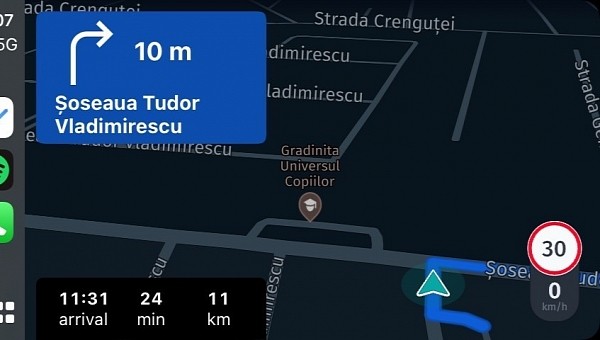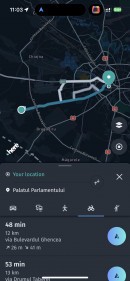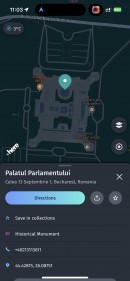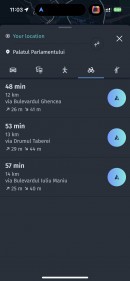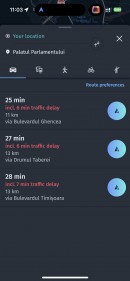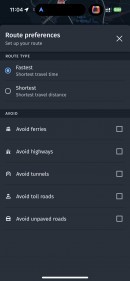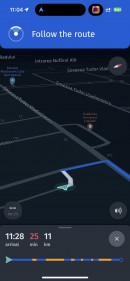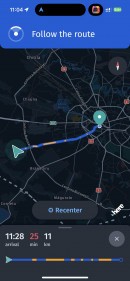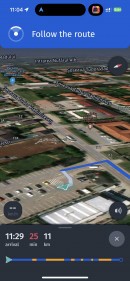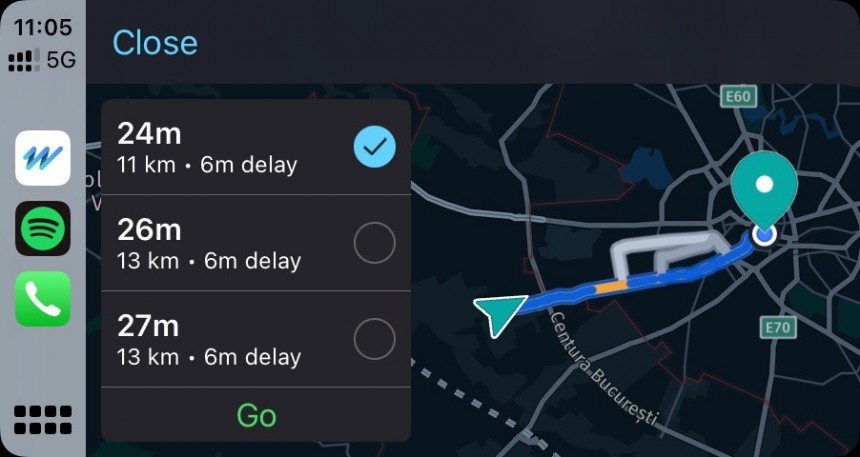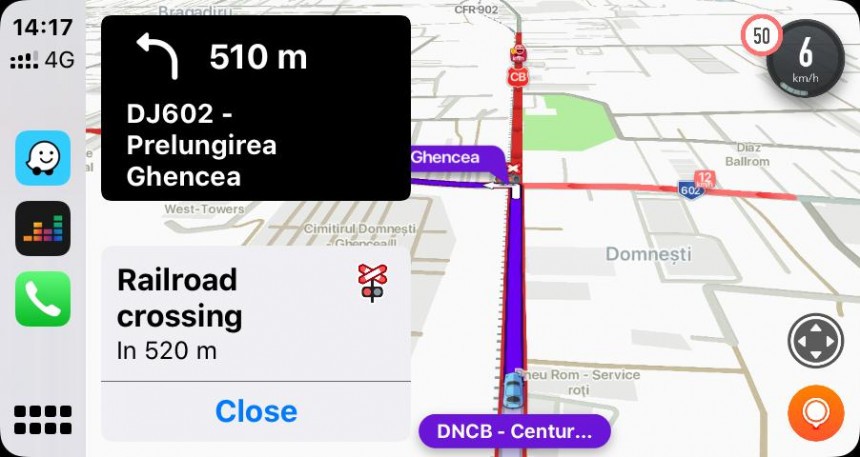In so many ways, real-time hazard warnings are a fundamental part of a global effort to make the road more predictable. They are, perhaps, the most efficient way to make the driver aware of what’s happening on the road ahead, therefore giving them enough time to act accordingly as they approach the location of a report.
Just imagine that you’re driving on a highway and fog suddenly reduces visibility to a minimum, making it impossible for the other motorists to see what’s ahead. In most cases, drivers tend to slam on the brakes, therefore, causing a major risk of rear-end collisions.
By keeping the other drivers on the road up-to-date with the changing conditions, they get more time to slow down, eventually approaching the area with reduced visibility more carefully.
This is precisely why applications like Waze are so popular these days. Thanks to a crowdsourcing engine, Waze allows drivers to report what’s happening on the road, with the app thus getting real-time data to alert other motorists following the same route.
The main drawback in the case of Waze, however, comes down to the way you need to send those reports. Unless they rely entirely on voice commands, which we all know how unreliable they are, drivers need to take their eyes off the road and touch the phone or the stereo screen to mark the location of a specific report.
This is a big no-no for a wide variety of reasons, but even so, Waze continues to be one of the most popular navigation solutions out there, and this crowdsourcing engine is specifically what sets it apart from the rest of the crowd.
Navigation expert HERE, whose software is often considered the top alternative to Google Maps, has come up with a new-generation idea that reinvents the real-time hazard warnings shown to drivers. It no longer relies on manual reports, as in the case of Waze, but on automatic warnings based on a wide variety of sources.
And the most important is the army of sensors already installed on new-generation cars.
Called HERE Road Alerts, the new system can read information from various vehicle systems, including ESP, ABS, emergency brakes, fog and hazard lights, wipers, image sensors, and so on. The aggregate data from cars on the road is then submitted to a remote server where it’s analyzed and then converted into warnings that are forwarded to other motorists right on the screens in the cabin.
The whole thing has been designed to be as straightforward as possible, and it relies entirely on an automatic system. For instance, if you turn on the fog lights, HERE’s code assumes you’re driving in an area with low visibility and therefore collects the data that could eventually generate a fog alert. Based on a rich set of data that must include a certain report threshold for high accuracy, the system can then generate the fog alert for the rest of the drivers whose routes go through the same location.
HERE, however, says it’s not only using vehicle sensors to collect such data. Because accuracy is critical for such a system, it relies on a large pool of different sources, including GPS data points from cars and devices, official road authorities such as government agencies, as well as third-party sources like news outlets and even social accounts where traffic incidents are typically reported.
The data from all these sources is eventually brought under the same roof, with HERE processing all the information and generating reports whose accuracy is something we’ll all have to find out one day.
As everyone knows already, Waze supports a wide variety of reports, from traffic jams to roadkill, speed traps, broken traffic lights, and so on.
HERE is aiming for a similar approach, especially because it uses multiple sources for the data it collects and then processes for real-time hazard warnings. For example, the information received from vehicle sensors allows the company to issue hazard alerts for broken-down vehicles, accidents, slippery roads, and reduced visibility.
The other sources contribute valuable information for additional warnings, including roadworks, obstacles on the road, and wrong-way drivers.
Needless to say, the types of reports supported by HERE Road Alerts can further be expanded as cars get smarter and are able to collect and provide the system with additional information, not only on the vehicles themselves but also on the road.
Is HERE’s new system a Waze killer? Yes and no.
First and foremost, it’s important to keep in mind that HERE’s concept is entirely based on an automated system. In other words, everything comes down to its accuracy, and while the company is using multiple sources specifically to reduce the likelihood of false reports, don’t be too surprised if they still show up occasionally.
On the other hand, the smarter our vehicles are getting, the more accurate these reports are going to become. It’s not difficult to see the main benefit of having your car send and receive reports automatically, as the added convenience not only allows the driver to focus on the road all the time but also stay up-to-date with what’s happening ahead without any input on their side.
HERE says it’s going to use vehicle sensor data from millions of cars already on the road (obviously running its very own software, which is currently installed in vehicles from a wide variety of brands), and given the new NCAP rating system, we should see the new hazard alerts at work as soon as this year.
By keeping the other drivers on the road up-to-date with the changing conditions, they get more time to slow down, eventually approaching the area with reduced visibility more carefully.
This is precisely why applications like Waze are so popular these days. Thanks to a crowdsourcing engine, Waze allows drivers to report what’s happening on the road, with the app thus getting real-time data to alert other motorists following the same route.
The main drawback in the case of Waze, however, comes down to the way you need to send those reports. Unless they rely entirely on voice commands, which we all know how unreliable they are, drivers need to take their eyes off the road and touch the phone or the stereo screen to mark the location of a specific report.
This is a big no-no for a wide variety of reasons, but even so, Waze continues to be one of the most popular navigation solutions out there, and this crowdsourcing engine is specifically what sets it apart from the rest of the crowd.
Navigation expert HERE, whose software is often considered the top alternative to Google Maps, has come up with a new-generation idea that reinvents the real-time hazard warnings shown to drivers. It no longer relies on manual reports, as in the case of Waze, but on automatic warnings based on a wide variety of sources.
And the most important is the army of sensors already installed on new-generation cars.
The whole thing has been designed to be as straightforward as possible, and it relies entirely on an automatic system. For instance, if you turn on the fog lights, HERE’s code assumes you’re driving in an area with low visibility and therefore collects the data that could eventually generate a fog alert. Based on a rich set of data that must include a certain report threshold for high accuracy, the system can then generate the fog alert for the rest of the drivers whose routes go through the same location.
HERE, however, says it’s not only using vehicle sensors to collect such data. Because accuracy is critical for such a system, it relies on a large pool of different sources, including GPS data points from cars and devices, official road authorities such as government agencies, as well as third-party sources like news outlets and even social accounts where traffic incidents are typically reported.
The data from all these sources is eventually brought under the same roof, with HERE processing all the information and generating reports whose accuracy is something we’ll all have to find out one day.
As everyone knows already, Waze supports a wide variety of reports, from traffic jams to roadkill, speed traps, broken traffic lights, and so on.
HERE is aiming for a similar approach, especially because it uses multiple sources for the data it collects and then processes for real-time hazard warnings. For example, the information received from vehicle sensors allows the company to issue hazard alerts for broken-down vehicles, accidents, slippery roads, and reduced visibility.
The other sources contribute valuable information for additional warnings, including roadworks, obstacles on the road, and wrong-way drivers.
Needless to say, the types of reports supported by HERE Road Alerts can further be expanded as cars get smarter and are able to collect and provide the system with additional information, not only on the vehicles themselves but also on the road.
First and foremost, it’s important to keep in mind that HERE’s concept is entirely based on an automated system. In other words, everything comes down to its accuracy, and while the company is using multiple sources specifically to reduce the likelihood of false reports, don’t be too surprised if they still show up occasionally.
On the other hand, the smarter our vehicles are getting, the more accurate these reports are going to become. It’s not difficult to see the main benefit of having your car send and receive reports automatically, as the added convenience not only allows the driver to focus on the road all the time but also stay up-to-date with what’s happening ahead without any input on their side.
HERE says it’s going to use vehicle sensor data from millions of cars already on the road (obviously running its very own software, which is currently installed in vehicles from a wide variety of brands), and given the new NCAP rating system, we should see the new hazard alerts at work as soon as this year.
